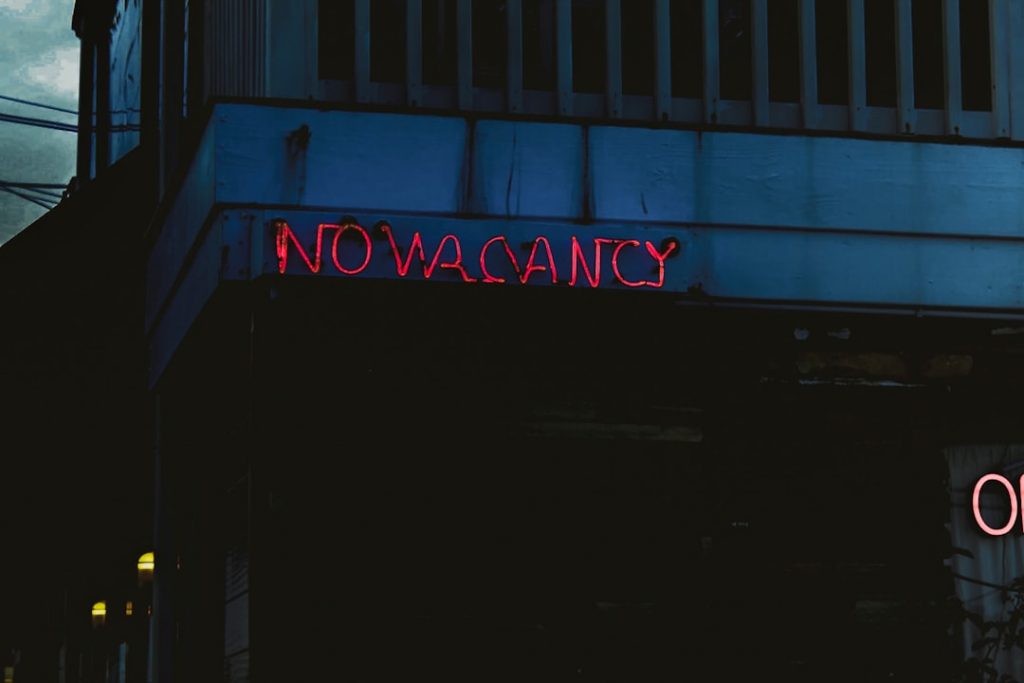Dynamic displays refer to signage and banners that are capable of displaying changing content, such as text, images, and videos. These displays are typically powered by LED (Light Emitting Diode) technology, which allows for vibrant and eye-catching visuals. LED signs and banners have become increasingly popular in recent years due to their ability to capture attention and effectively convey messages.
LED signs and banners are versatile and can be used in a variety of settings, including retail stores, restaurants, stadiums, airports, and more. They can be used to promote products or services, provide information, create ambiance, or simply attract attention. LED displays are known for their brightness, clarity, and durability, making them an ideal choice for businesses and organizations looking to make a lasting impression.
The Evolution of Signage: From Static to Dynamic Displays
Signage has been used for centuries as a means of communication and advertising. In the past, signage was primarily static, consisting of painted or printed signs that did not change or move. However, advancements in technology have revolutionized the way signage is created and displayed.
The introduction of electricity in the late 19th century paved the way for illuminated signs, which were initially made using incandescent bulbs. These signs were brighter and more eye-catching than their non-illuminated counterparts. However, they were limited in terms of design possibilities and were often expensive to maintain.
The development of LED technology in the 1960s brought about a new era in signage. LEDs are small electronic devices that emit light when an electric current passes through them. They are energy-efficient, long-lasting, and capable of producing vibrant colors. This made them an ideal choice for signage applications.
The Benefits of Dynamic Displays for Businesses and Organizations
Dynamic displays offer several advantages over traditional static signage. Firstly, they provide increased visibility and brand awareness. The dynamic nature of these displays makes them more attention-grabbing and memorable, ensuring that businesses and organizations stand out from the competition.
Additionally, dynamic displays allow for the display of dynamic content. This means that businesses can easily update their messaging and promotions to reflect current events or seasonal offers. This flexibility allows for more targeted and relevant advertising, which can lead to increased customer engagement and sales.
Furthermore, dynamic displays are cost-effective and flexible. LED technology is energy-efficient, which means that businesses can save on electricity costs compared to traditional signage. Additionally, LED displays are durable and require minimal maintenance, reducing the need for frequent replacements or repairs.
Understanding the Technology behind LED Signs and Banners
LED technology works by using a semiconductor material that emits light when an electric current is applied. The color of the light emitted depends on the specific materials used in the LED. Red, green, and blue LEDs are commonly used to create full-color displays.
LED displays come in various forms, including LED signs, LED billboards, LED video walls, and LED banners. LED signs are typically used for smaller-scale applications, such as storefronts or indoor displays. LED billboards are larger and are often used for outdoor advertising. LED video walls consist of multiple LED panels arranged together to create a seamless display. LED banners are flexible and can be curved or shaped to fit specific spaces.
When choosing an LED display, there are several factors to consider. These include pixel pitch (the distance between each pixel), resolution (the number of pixels per unit area), brightness (measured in nits), viewing angle (the maximum angle at which the display can be viewed without loss of quality), and refresh rate (the number of times per second that the image is refreshed).
Designing Effective and Eye-Catching Dynamic Displays
Design plays a crucial role in the effectiveness of dynamic displays. A well-designed display will capture attention, convey the intended message, and leave a lasting impression on viewers. Here are some tips for creating effective content for dynamic displays:
1. Keep it simple: Avoid cluttering the display with too much information. Use concise and clear messaging to ensure that viewers can quickly understand the message.
2. Use high-quality visuals: High-resolution images and videos will enhance the visual impact of the display. Ensure that the content is clear, sharp, and vibrant.
3. Consider the viewing distance: The size of the display and the viewing distance will determine the optimal font size and image resolution. Make sure that the content is easily readable from the intended viewing distance.
4. Incorporate motion: Dynamic displays have the advantage of being able to display moving images. Utilize this feature by incorporating subtle animations or transitions to capture attention.
5. Test and iterate: Regularly review and update the content on the display to ensure that it remains fresh and engaging. Monitor viewer response and make adjustments as needed.
The Role of Dynamic Displays in Branding and Marketing Strategies

Dynamic displays can play a significant role in enhancing branding efforts for businesses and organizations. By using dynamic displays, companies can effectively communicate their brand identity, values, and messaging to a wide audience.
Dynamic displays allow for more creative and engaging advertising campaigns. Businesses can use dynamic content to tell stories, showcase products or services, or create immersive experiences for customers. This helps to build brand awareness and establish an emotional connection with consumers.
Several successful marketing campaigns have utilized dynamic displays to great effect. For example, Coca-Cola’s “Share a Coke” campaign used LED billboards to display personalized messages, creating a sense of personalization and connection with consumers. Similarly, Nike’s “Just Do It” campaign used LED video walls to showcase inspiring videos of athletes, reinforcing their brand message of determination and achievement.
To integrate dynamic displays into overall marketing strategies, businesses should consider how these displays can complement other marketing channels, such as social media, print advertising, and online campaigns. By creating a cohesive and consistent brand experience across all channels, businesses can maximize the impact of their marketing efforts.
Dynamic Displays and the Customer Experience: Enhancing Engagement and Interaction
Dynamic displays have the potential to greatly enhance the customer experience. By creating visually appealing and interactive displays, businesses can engage customers and encourage them to interact with the brand.
Interactive displays allow customers to actively participate in the brand experience. For example, touchscreens can be used to provide additional information about products or services, allow customers to customize their purchases, or even play games. This level of interactivity not only increases engagement but also provides valuable data and insights into customer preferences and behaviors.
Several businesses have successfully implemented interactive displays to enhance the customer experience. For instance, Sephora uses interactive mirrors in their stores that allow customers to virtually try on makeup products. This not only saves time but also provides a fun and engaging experience for customers.
The benefits of customer engagement through dynamic displays are numerous. Engaged customers are more likely to make a purchase, recommend the brand to others, and become loyal customers. By providing an interactive and memorable experience, businesses can build stronger relationships with their customers and differentiate themselves from competitors.
The Impact of Dynamic Displays on Foot Traffic and Sales
Numerous studies have shown that dynamic displays can have a significant impact on foot traffic and sales for businesses. The attention-grabbing nature of dynamic displays attracts passersby and encourages them to enter the store or engage with the brand.
For example, a study conducted by the University of Cincinnati found that LED signs increased sales by an average of 15.6% for businesses in the retail sector. Another study conducted by the University of San Diego found that LED billboards led to an increase in sales of up to 54% for businesses in the food service industry.
Several businesses have reported increased foot traffic and sales after implementing dynamic displays. For instance, a restaurant in New York City saw a 30% increase in foot traffic after installing an LED sign. Similarly, a clothing store in London reported a 20% increase in sales after installing an LED video wall.
Measuring the return on investment (ROI) of dynamic displays can be challenging, as there are many factors that contribute to sales and foot traffic. However, businesses can track metrics such as footfall, sales, and customer feedback to gauge the effectiveness of their dynamic displays. By analyzing this data, businesses can make informed decisions about their marketing strategies and optimize their dynamic displays for maximum impact.
Regulations and Best Practices for the Installation and Maintenance of LED Signs and Banners
When installing and maintaining LED signs and banners, it is important to adhere to local regulations and best practices to ensure safety and compliance. Local regulations may vary depending on the jurisdiction, so it is essential to consult with local authorities before installing any signage.
Some common regulations for LED displays include restrictions on size, brightness, location, and content. For example, some areas may have restrictions on the size of LED billboards or the brightness of LED signs to prevent light pollution or distraction to drivers. Additionally, some jurisdictions may have guidelines on the content that can be displayed on LED signs to ensure that it is appropriate and does not violate any laws or regulations.
In terms of maintenance, regular inspections and cleaning are essential to ensure the longevity and effectiveness of LED signs and banners. Dust, dirt, and debris can accumulate on the surface of the display, reducing visibility and image quality. Regular cleaning with non-abrasive materials is recommended to keep the display looking its best.
Furthermore, it is important to regularly check for any damage or malfunctioning components. LED displays are made up of multiple individual LEDs, so if one or more LEDs fail, it can affect the overall image quality. Prompt repairs or replacements should be carried out to maintain the integrity of the display.
The Future of Dynamic Displays: Emerging Trends and Innovations
The future of dynamic displays is filled with exciting possibilities. As technology continues to advance, we can expect to see new innovations and trends in the world of dynamic displays.
One emerging trend is the use of transparent LED displays. These displays allow for the projection of images and videos onto transparent surfaces, such as windows or glass panels. This creates a unique and immersive visual experience, as the content appears to be floating in mid-air.
Another trend is the integration of artificial intelligence (AI) into dynamic displays. AI can be used to analyze customer data and preferences in real-time, allowing for more personalized and targeted advertising. For example, AI-powered dynamic displays can display different content based on the demographics or interests of the viewer.
Furthermore, advancements in flexible LED technology are opening up new possibilities for dynamic displays. Flexible LED displays can be curved or shaped to fit unconventional spaces, allowing for more creative and unique installations. This flexibility also extends to the design possibilities, as content can be displayed in non-traditional formats.
To stay ahead of the curve with dynamic displays, businesses should keep an eye on emerging technologies and trends. By embracing new innovations and incorporating them into their marketing strategies, businesses can continue to captivate audiences and drive success with dynamic displays.
If you’re interested in learning more about the impact of LED signs and banners, you might find this article from Simply Signs NW’s blog quite informative. They delve into the topic of dynamic displays and explore how LED signs can make a significant difference in attracting customers and increasing brand visibility. To read more about this fascinating subject, visit their blog at https://simplysigns-nw.co.uk/blog/. Additionally, if you’re looking to purchase high-quality LED signs and banners, Simply Signs NW also offers a wide range of options in their online shop. Check it out at https://simplysigns-nw.co.uk/shop/.
FAQs
What are LED signs and banners?
LED signs and banners are electronic displays that use light-emitting diodes (LEDs) to create bright and eye-catching visuals. They are commonly used for advertising, information display, and decorative purposes.
What are the benefits of using LED signs and banners?
LED signs and banners offer several benefits, including high visibility, low energy consumption, long lifespan, and flexibility in terms of design and content. They can also be easily updated and programmed remotely.
What are the different types of LED signs and banners?
There are several types of LED signs and banners, including indoor and outdoor displays, single-color and full-color displays, scrolling and static displays, and modular and custom displays.
What is the impact of LED signs and banners on businesses?
LED signs and banners can have a significant impact on businesses by increasing visibility, attracting customers, and improving brand recognition. They can also provide real-time information and enhance the overall customer experience.
What are the potential drawbacks of using LED signs and banners?
Some potential drawbacks of using LED signs and banners include high upfront costs, maintenance requirements, and potential visual pollution. Additionally, some municipalities have regulations on the use of LED signs and banners, which businesses must comply with.
We’re a team of creatives who are excited about unique ideas and help fin-tech companies to create amazing identity by crafting top-notch signage.



